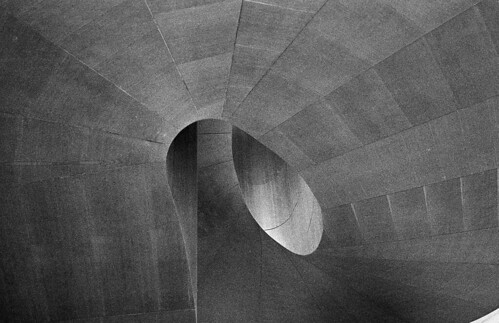Developing Film at Home: A Year in Review
7 January 2010, mid-morning
It’s been a little over a year since I started developing and scanning my own B&W film. In that time i’ve developed 49 rolls of film. Well, those are rolls that actually turned out. I’ve also destroyed 4 rolls of film due to using bad chemicals or other stupidness on my part. Developing film is a pretty satisfying process. For the most part, I think I’ve more or less sorted out how to do it properly. I’m probably not as careful as I should/could be, but my negatives seem to turn out fine nevertheless.
I’ve been using FilmDev.org to track how I develop my film. The site works well, and can be instructive in showing you how different films and developers work together. Because HP5+ is readily available on the cheap here in Toronto, that’s the B&W film I’ve used the most. I started off using Ilfosol-3 as my primary developer, but I think I prefer T-Max Developer from Kodak more. It seems more versatile, and the results seem a bit more punchy. I suppose it’s all a matter of taste.
Developing B&W film at ImageWorks costs $7 a roll, which works out to $343 to process everything I’ve done. (Holy shit, right?) Since I started developing at home I’ve used up one bottle of Ilfosol-3, one bottle of T-Max Developer, one bottle of Ilford Fix. That’s around $30 of chemicals that are now all gone. I’ve still got bottles of: T-Max Developer, Diafine, Ilford Fix, Ilford Stop and some Kodak Photoflo. That’s probably $50-$60 worth of chemicals that should last a good while. I could probably do another 50 or so rolls with what I have left. I had to pay about $40 to get all the other materials I need to develop film, but that’a fixed cost. So, the conclusion here is that it’s a lot cheaper doing this all yourself. I think the results are better as well.
The big problem with shooting film is getting the results onto your computer. I have an Epson V500 scanner, which has an attachment for scanning negatives. Having ImageWorks scan film for me would cost $6 a roll, which would have cost me $294. My scanner cost me $200. Again, this is a fixed cost. So, for the most part scanning at home is another win. Well, almost: scanning film is horrible. It’s a slow, boring, and more often than not frustrating process. I still can’t figure out — at all — how to scan my slide film correctly. Colour film is just as problematic. I manage well enough with B&W film, but it’s not without its own issues. No matter how hard I try I always end up with dust marks on my scans. All the scans I post online need to be spotted to get rid of all these marks. The whole process, scanning and touching up, is so damn slow. I’m not sure if there is really anything I can do to improve this situation.
You can see all the photographs I’ve developed myself in my Flickr set, BYOB&W. (If you have a fast connection, IMG VQVZ will probably present them in a nicer fashion, all the images on a single page.) I’m quite happy with all my recent shots. This roll in particular has some really nice pictures.
I’ve been developing film at home for a year now and save for some strange stains on my bathroom vanity I think the process has been a positive one.


I’m all about you scanning film at home… but another downside is one grumpy Shima when I can’t sleep because you’re scanning late into the night.
by sh!ma on January 7 2010, 10:58 am #
I totally know what you mean about scanning film. Even on a real film scanner, the process is no less taxing and not really any better result-wise. I wonder what real labs use that makes them able to do such a good job so quickly. I’ve been burned so often that I really don’t hesitate shelling out the extra 6-7$ to scan if it means saving my sanity.
(and of course, it helps to have that understanding spouse too :) )
by pketh on January 7 2010, 4:18 pm #
I think I will start trying to dev some bw this year. I picked up a few rolls in Taiwan to give me some incentive!
by Eric on January 7 2010, 5:45 pm #
The problem with the scans a lot of labs make is that they are so over-sharpened. I think this is because they use them to print your photos with, so they need to be that way, but they usually don’t look so hot on your computer screen. (Well, at least Shopper’s is this way.)
by ramanan on January 8 2010, 10:30 am #